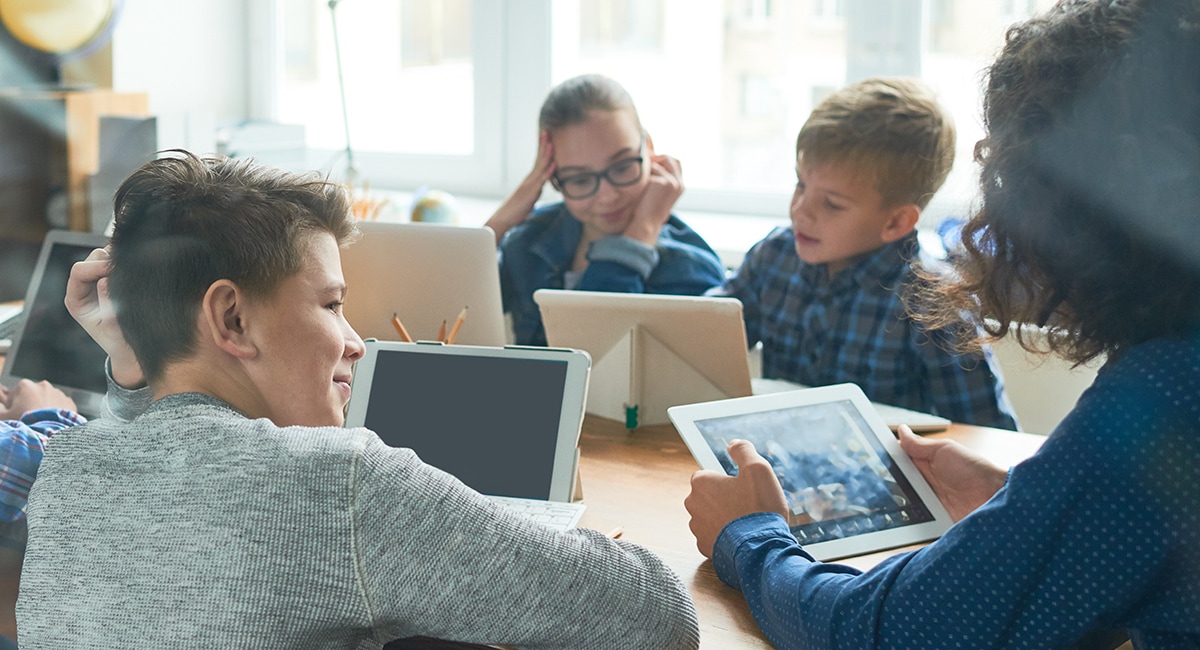February 24, 2020
How Modern Classrooms Can Boost 21st-Century Skills
Find out how aligning physical spaces with technology and pedagogy can transform learning outcomes.

For a time, the presence of tablets and laptops in classrooms was a major point of emphasis for schools seeking to prepare students for the world (and job market) of tomorrow. Increasingly, however, educators are beginning to realize that devices are just one component of the modern learning environment (MLE), which also incorporates flexible furniture, audiovisual solutions and — most importantly — instruction tailored to take advantage of these tools.
Check out these best practices for creating modern learning environments in your own school.
If you haven’t read it, we suggest checking out the Partnership for 21st Century Learning’s Framework for 21st Century Learning, which breaks down skills into three overarching categories. This blog will explain how the MLE can help students to excel in each of them.
Learning and Innovation
This category includes skills such as creativity, critical thinking, problem-solving, communication and collaboration. “Learning and innovation skills are what separate students who are prepared for increasingly complex life and work environments in today’s world and those who are not,” notes the Partnership for 21st Century Learning in its framework.
This is an area where flexible furniture becomes incredibly important. Schools can put every conceivable piece of technology in front of students, but if the kids are still sitting in rows for “drill and kill” instruction, the classroom experience simply will not be changed. Desks designed to enable group work — through features like wheels, dry-erase writing surfaces and designs that easily accommodate clusters — are key to supporting both students and teachers. Many teachers would like to incorporate more group work in their lessons but may fear the loss of instructional minutes due to students dragging their desks across the room. Flexible furniture sets the entire classroom up for success.
Information, Media and Technology Skills
Information and media literacy skills are more important in the 21st century than they’ve ever been before. In their daily lives, students are bombarded with an overwhelming amount of information (and, often, misinformation) from a far greater number of sources than previous generations had to contend with. Schools play a big role in guiding students on how to determine the credibility of these sources and how to evaluate and synthesize the information they present.
Access to devices is clearly an important part of this. But schools also need to invest in ancillary tools such as mobile power solutions that ensure students will be able to use their laptops or tablets when they need them. Also, wireless digital displays give students a platform to share videos and images with their classes.
As teachers become more comfortable with MLE solutions — and as schools provide appropriate professional development — they will naturally push their instruction forward. For example, a teacher might present students with several news headlines and images taken from the internet, then ask them to work in groups to decide which sources are presenting information in a biased or misleading manner. Students can quickly form groups using flexible furniture, research claims online and then present their findings to the entire class using digital displays.
Life and Career Skills
Life and career skills include flexibility, adaptability, initiative, self-direction, social and cross-cultural skills, productivity, accountability, leadership and responsibility. To instill these competencies, it’s important for teachers not only to reach every student, but also to give students an opportunity to work together and learn from one another.
Flexible furniture can make a difference in small but powerful ways. A larger student who was previously forced to sit in a folding chair due to rigid desk designs will now be able to fully participate. A student who uses a wheelchair may be able to traverse the classroom with greater ease, opening up the possibility of new groups and pairings.
Thinking of furniture as an important component of student learning may require a mental shift on the part of some educators and administrators. But these solutions, along with audiovisual tools, are important for helping teachers take full advantage of student devices — and ultimately move up the integration ladder from merely substituting devices for pen and paper to redefining classroom instruction.
When schools have their technology, their physical space and their pedagogy all in alignment, real transformation can take place in the classroom.

